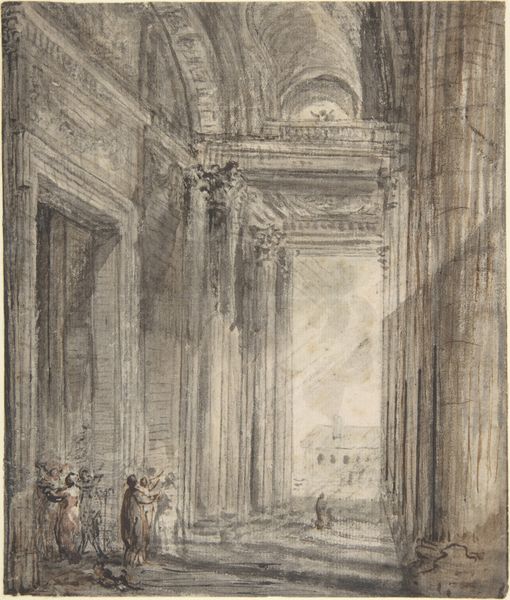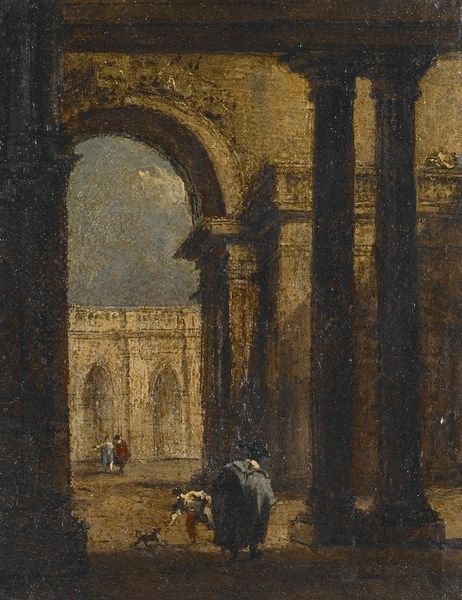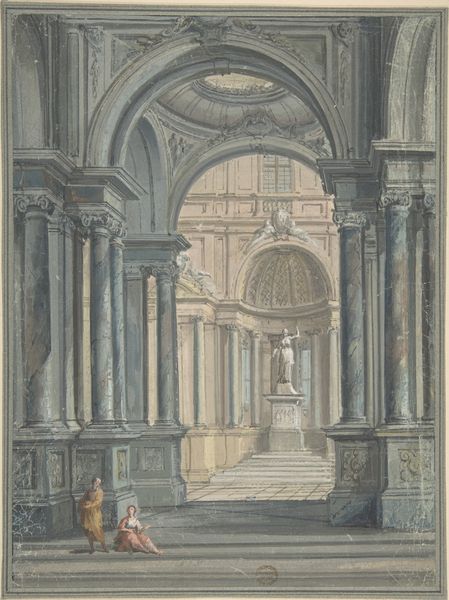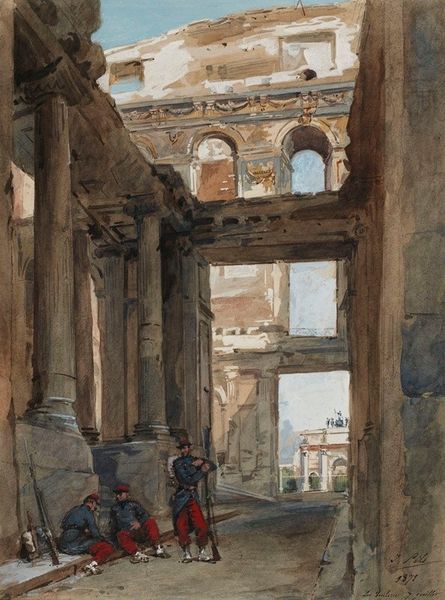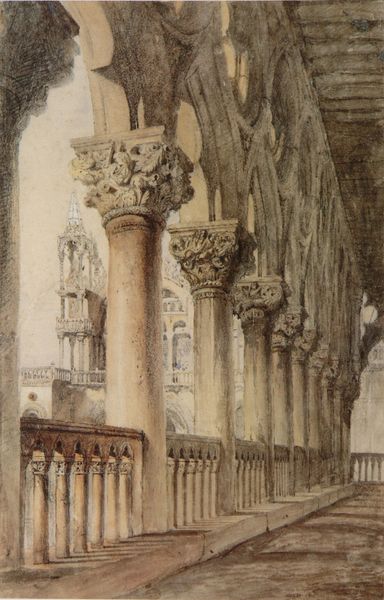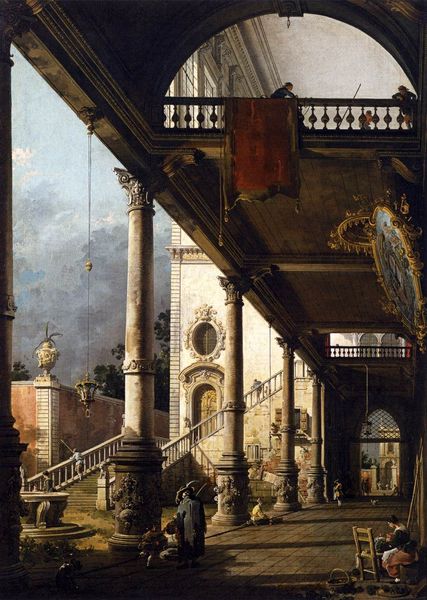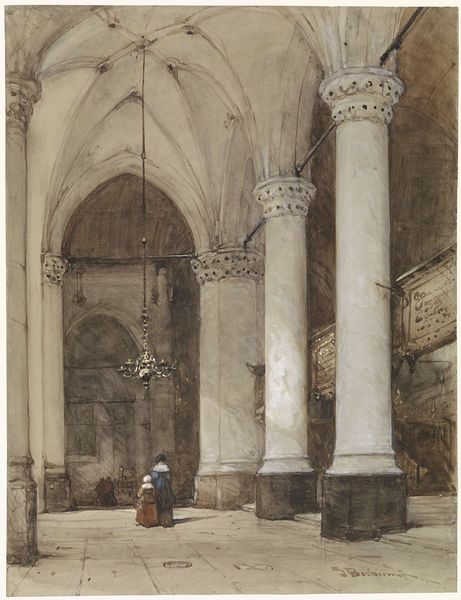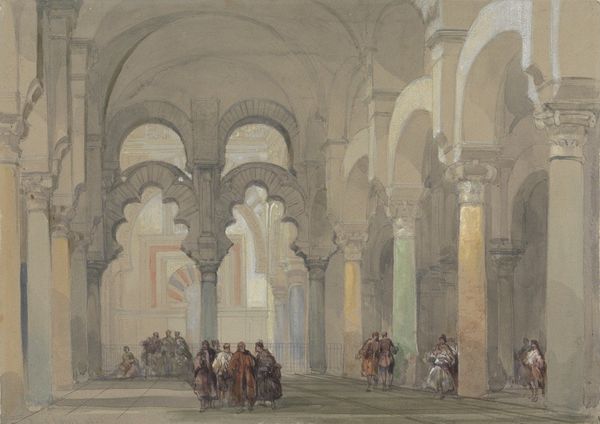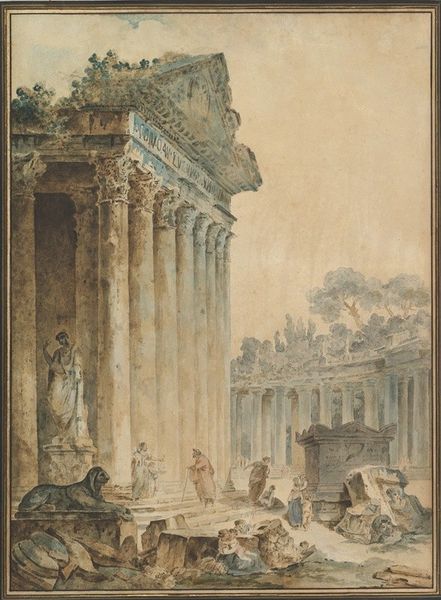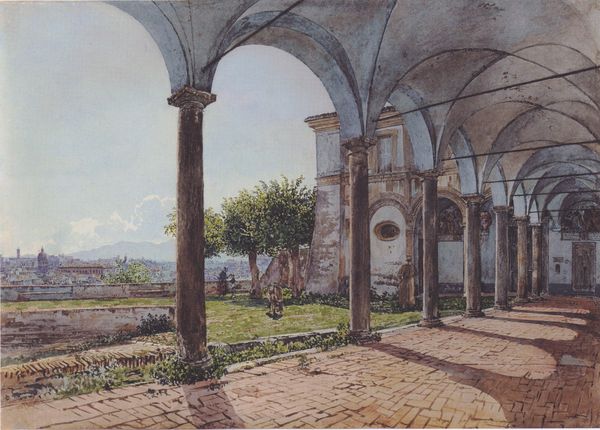
painting, watercolor, architecture
#
painting
#
watercolor
#
column
#
romanticism
#
arch
#
cityscape
#
genre-painting
#
architecture
#
historical building
Dimensions: 51.3 x 41 cm
Copyright: Public domain
Curator: This watercolour from 1841, entitled "Ruins of Diocletian at Split," was painted by Rudolf von Alt. It offers a view of the ancient palace courtyard, teeming with details of daily life amidst the decaying architecture. Editor: It feels melancholic, almost like looking at a sepia-toned photograph, even though it's a watercolor. The contrast between the solid ruins and the soft sky is really striking. Curator: I find Alt's romantic treatment of the scene particularly interesting. Look at the placement of the figures – strategically arranged, but seemingly unaware of the grandeur surrounding them. The ruins stand as a testament to a fallen empire, whilst these genre-painting details position everyday life as continuous, yet subordinate. The architecture isn’t really the primary theme, in that sense. Editor: The ruins themselves have a certain symbolism though. Arches, columns… these aren't just architectural elements; they signify power, empire, and, ultimately, transience. Even the soft colours add a layer of memory, of the past bleeding into the present. Note also the use of light here to emphasize that narrative. Curator: Precisely. Alt captures the weight of history but also implies questions. Who gets to experience it, and how does the burden of history interact with contemporary experience, and especially, how do social hierarchies affect the way we look back to it? These ruins have always been contested spaces that continue to generate intersectional questions. Editor: What really intrigues me is how these symbols, particularly in an 1841 setting, tap into collective memory. Diocletian, known for persecution and authoritarianism, ironically left a lasting architectural legacy. Von Alt, then, is reminding viewers of these visual connections, and how symbols are continuously repurposed and re-signified across historical narratives. Even something as simple as an arch represents triumph, which continues resonating even through architectural fragmentation. Curator: It makes us confront our relationship with historical symbols – the weight they carry, but also the continuous opportunity for reinterpretation. Editor: A subtle yet powerful piece about the interplay between past and present, memory and decay. Curator: Yes, and the social layers that determine who gets to decide how the past lives on.
Comments
No comments
Be the first to comment and join the conversation on the ultimate creative platform.
